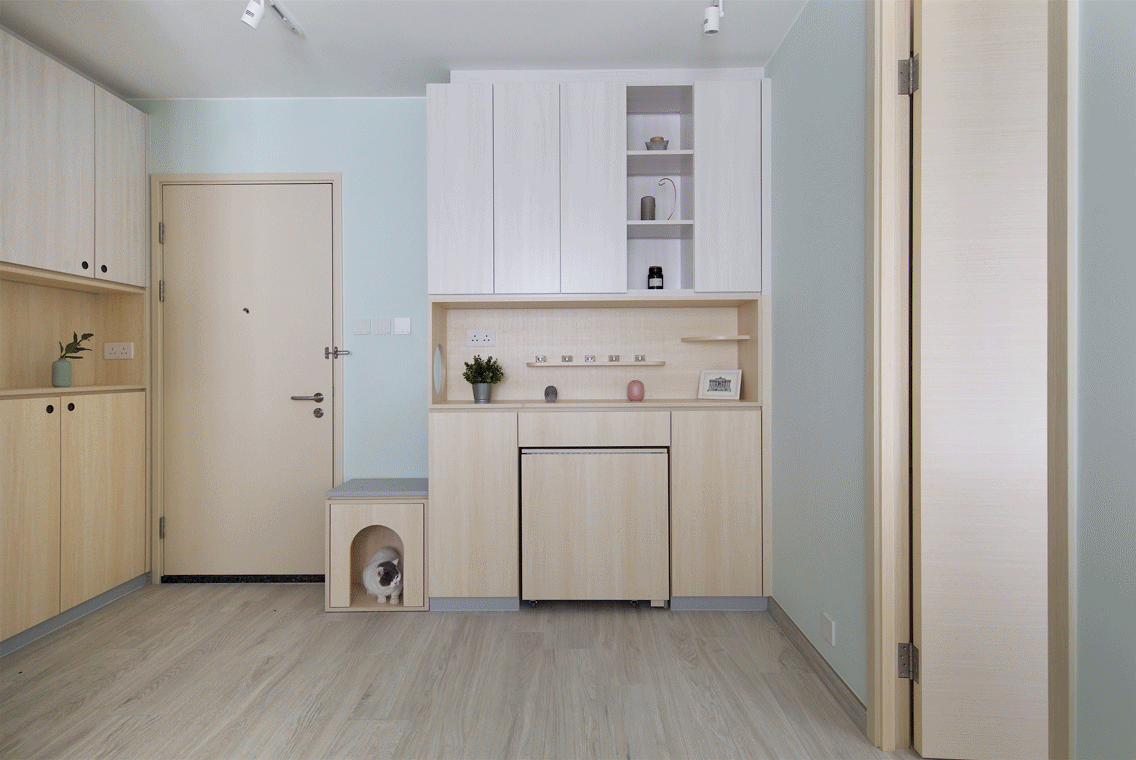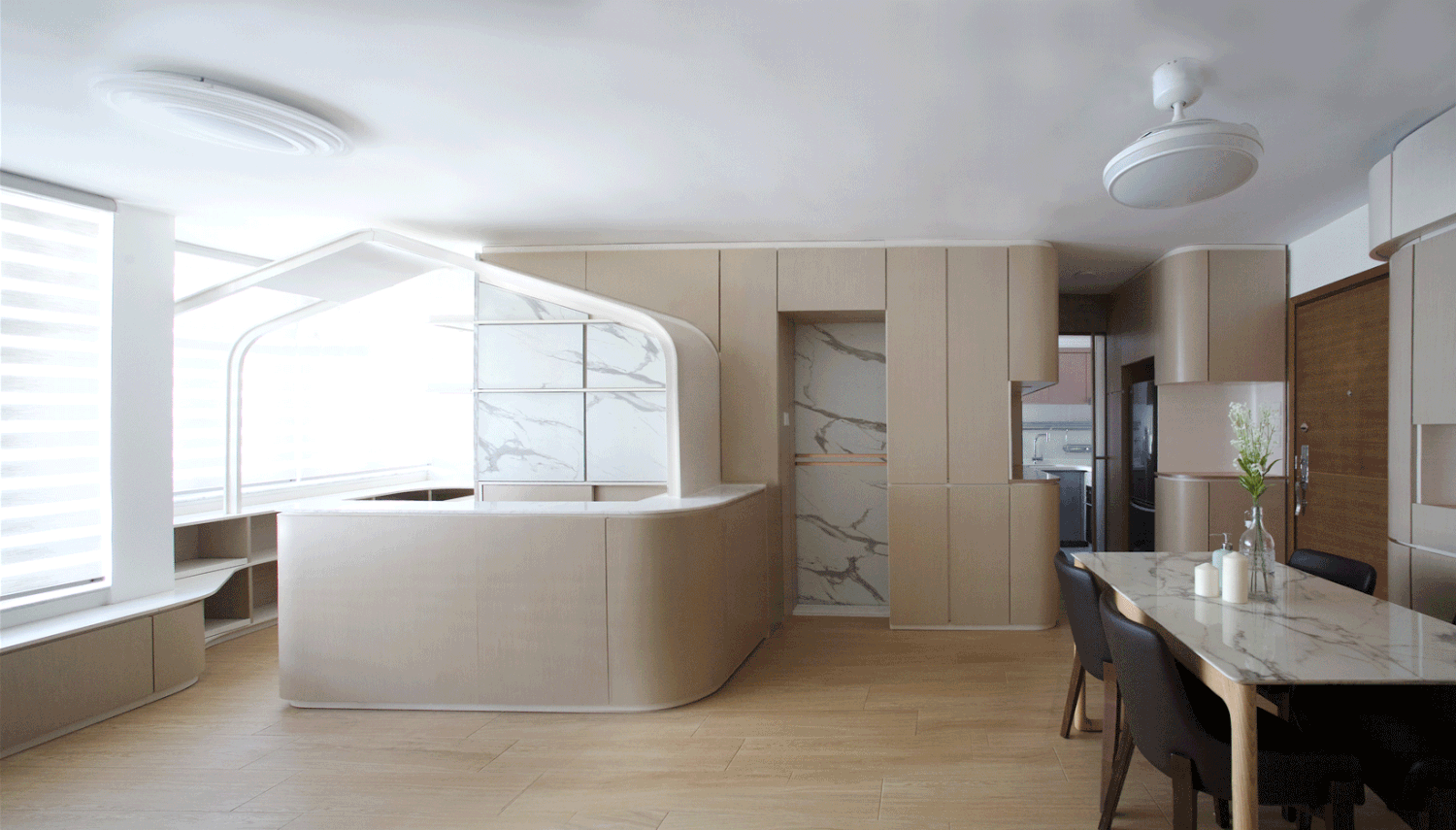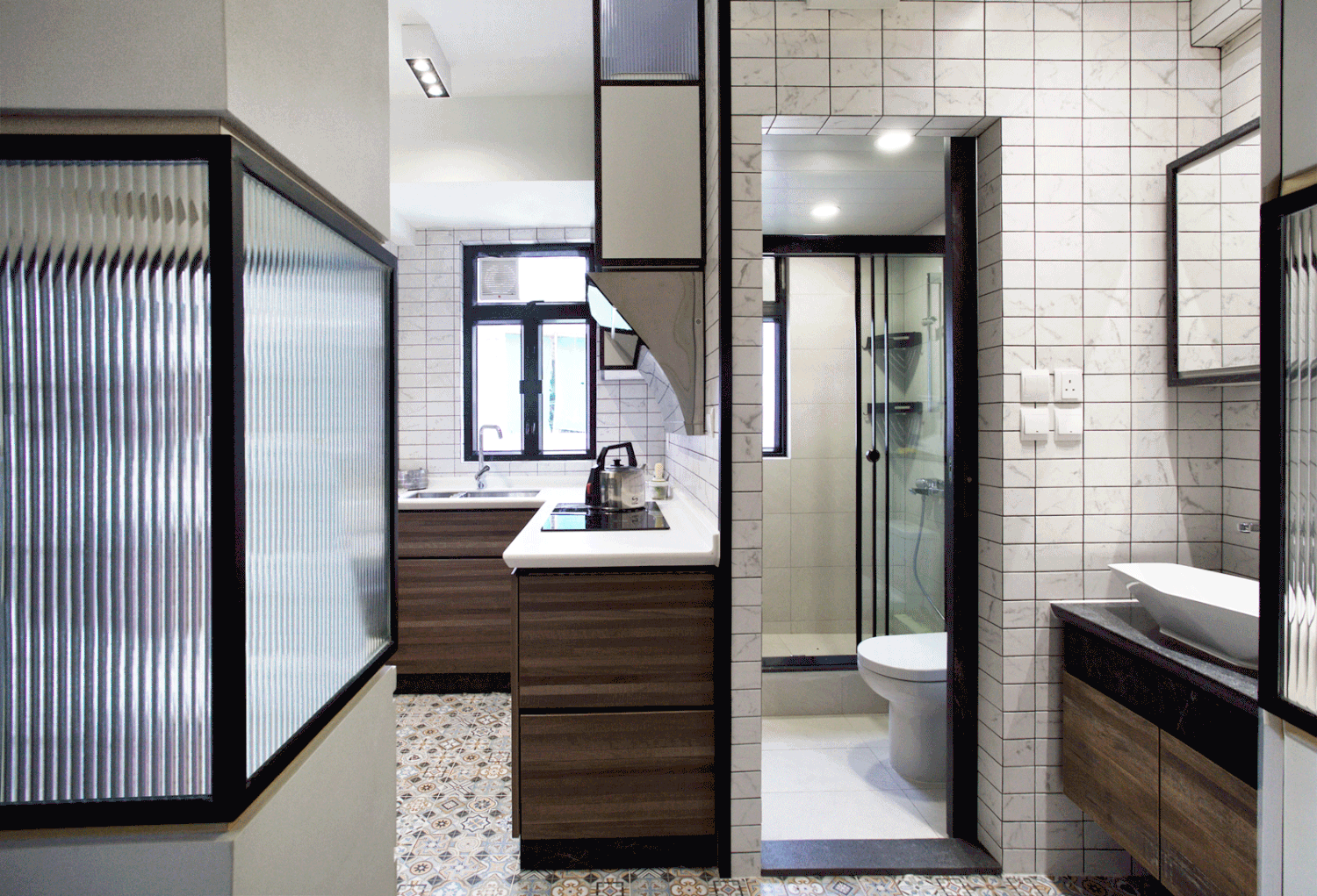

Hong Kong is known for its skyscrapers and busy urban landscapes. However, within the dense complexity of the city architect Patrick Lam uses Hong Kong's crowded landscape as inspiration to creating simple design solutions for residential living. Skilled in both architecture and fine arts, Lam's design firm Sim-Plex taught him to think of every possibility a small space could offer.
For this week's Studio Snapshot, Archinect chats with Lam about art, living in Kowloon City, and what it means to expand the possibilities of limited space.
How many people are in your practice?
3 people and with 2 freelancers
What originally motivated you to start your own practice?
I lived in this small, old tenant apartment in Kowloon City for many years. This long term experience of living in a tiny space forced me to investigate the possibilities of expanding a limited space.
What hurdles have you come across?
To us, designing a tiny space is even more difficult than designing at a bigger scale since you have to think of several spatial scenarios to expand the possibilities. Therefore, even more time is consumed for the design process but the end result is rewarding.
Is scaling up a goal or would you like to maintain the size of your practice?
We definitely want to expand the whole team to around 10-15 people so that we could have more resources to investigate, research and communicate in the design process.
Having our own practice allows us to keep on thinking of the rationale for doing design, not just being a machine for design.
What are the benefits of having your own practice? And staying small?
Having our own practice allows us to keep on thinking of the rationale for doing design, not just being a machine for design. I believe there is an optimum size of a company for a good communication from design to execution, and therefore I would rather not scale up more than 15 people.


Do you have a favorite project? Completed or in progress.
All my projects I consider my babies, I love each of them. But if have to choose, I would pick the 'Pets Playground" which we just completed. It not only allows a harmonious living between two kinds of pets, but also allow both privacy and communion for two generations of people.
You express strong relationships between art and living. When did your interest in art transfer into your designs?
I studied for my Masters in Fine Arts for two years after being an architect for some time. I was frustrated with how art was being kept within an exhibition hall or being restricted as an "art piece to visit". I believe a true avant garde should release the work from the restriction of any physical location or this mindset of an "art piece". Therefore, in my work I'm constantly searching for a balance point between art and living through the projects of Sim-Plex.
Much of your work features arched frames and curved cabinetry. Does the curve aesthetic come from somewhere specific or is it purely related to structural functionality?
The curves are inspired from a poetic image of a village house along a river, with a moon shine on top. The curves captures the organic movement of a river.
You describe space as something to be treasured. Usually, when I think about space it's in regards to there not being enough. What do you think the future of architecture and design will look like as more and more places become overpopulated metropolises?
I believe there are solutions to searching for the potential of architecture and space, but I think transformable architecture or digital and smart facades will be more and more popular in the future.


You mentioned that you lived in Kowloon city for many years. How would you describe that experience?
Kowloon City is an old place in Hong Kong full of tenant houses. They are usually small and you always need to think of how to better use the space. This experience taught me think of every possibility a little space could offer.
Originally, space and requirements for living were simple. What Sim-Plex is trying to do is search for adaptive complexity and spacial transformation...
Many people have mixed feelings about living in smaller, simpler spaces. How does your work and projects address this?
Originally, space and requirements for living were simple. What Sim-Plex is trying to do is search for adaptive complexity and spacial transformation among the simple details of living, trying to expand the possibilities of limited space. That is also where the name "Sim-plex" comes from - "Searching for complexity among simplicity."
What's the best advice anyone has given you in regards to your work, practice, etc?
There is advice which I grab from a passage from Michael Mehaffy's Design for a Living Planet: Settlement, Science, and the Human Future, "The best architecture does not confuse these two aspects of life and art in a mutually destructive manner, but uses them to serve one another. Adaptive complexity is not complicatedness."
Lastly, If you could describe your practice in three words what would they be?
Live beyond limits.
Katherine is an LA-based writer and editor. She was Archinect's former Editorial Manager and Advertising Manager from 2018 – January 2024. During her time at Archinect, she's conducted and written 100+ interviews and specialty features with architects, designers, academics, and industry ...
No Comments
Block this user
Are you sure you want to block this user and hide all related comments throughout the site?
Archinect
This is your first comment on Archinect. Your comment will be visible once approved.